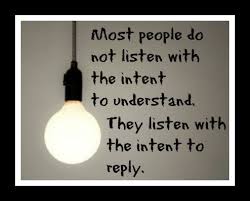I’ve often seen leaders and management unknowingly sabotage their own messaging by adding one itty-bitty word to an otherwise powerful statement.
The age-old discounter, the disconnector. The ‘But’.
Anyone in a management position that seeks professional improvement can tell you that in order to learn and grow, one must keep reading up on available content. Specifically, the available material on feedback and constructive criticism teach us to frame any message with a positive spin. For instance, “Your strongest skill is your ability to organize.”
Often, this is the set-up phrase that will accomplish several things for the person or employee being spoken to.
- Gets them listening. Everyone loves a compliment.
- Disarms a defensive listener.
- Creates pride in their work.
- Establishes your appreciation for their contributions.
A good leader must also be able to deliver negative messages or feedback, including the bad and the super ugly. The goal for each type of message, however, should be the same – to create a learning opportunity and to produce positive results. So starting with the good stuff is purposeful because it puts the listener in a positive position to hear more.
Even with a positive start, breaking the bad news is too often done like this; “Your strongest skill is your ability to organize, but your attendance is unreliable.”
The fact is that the positive message (“your strongest skill is your ability to organize”) is overshadowed by the second part of that sentence (“your attendance is unreliable”) due to use of the word “but”. Whether intentionally or subliminally, squeezing that itty-bitty-but word into the sentence packs a punch and communicates some very clear messages;
- You’ve discounted the positive thing.
- The first thing is LESS important than the last.
- You are displeased with them as a whole.
Overcome the “BUT” by consciously exchanging it for the powerful word “AND”, the most comprehensive of all  connectors. This accomplishes your intent to recognize the good stuff while addressing areas for improvement. A golden link of both parts, so to speak.
connectors. This accomplishes your intent to recognize the good stuff while addressing areas for improvement. A golden link of both parts, so to speak.
It’s not always easy, but creating the habit of using AND instead of BUT can change the way people feel about your feedback, while lending truth and validity to each point you make.
For more material on Powerful Phrasing, check out the following content:








